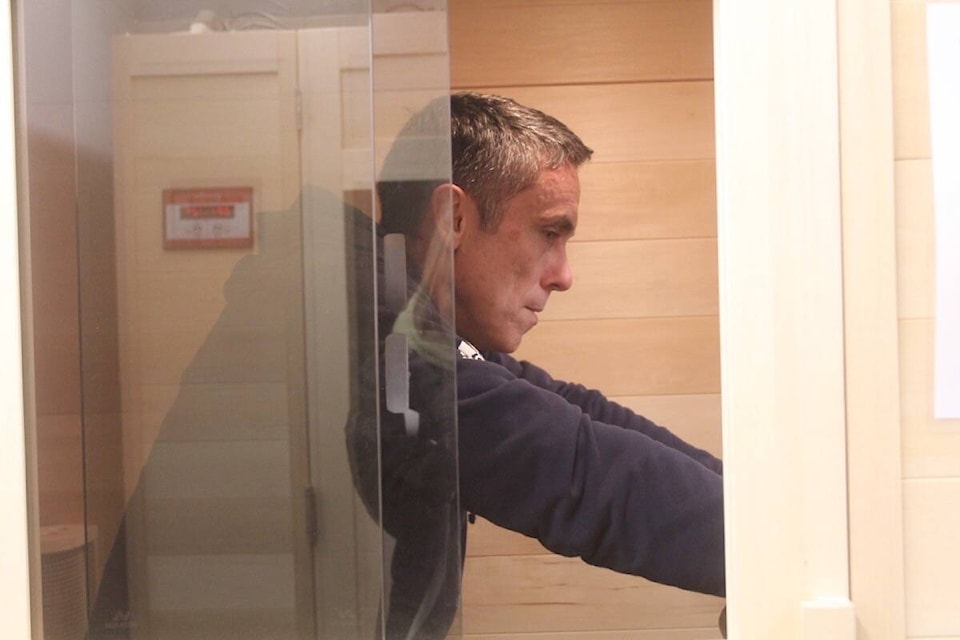Knowing occupational cancer is the primary cause of firefighter fatalities, Sidney Fire Chief Brett Mikkelsen sought some specific requirements when the community safety building was being designed.
He took the time to travel and gather information on his part, to have a building designed to last, with an expedient workflow to get crews to the trucks quickly while maintaining no cross-contamination.
The building that opened in 2019 and houses the fire department, an ambulance station, and Peninsula Emergency Measures Organization and serves as the EOC has all the “dirty areas” such as the turnout gear room and garage on separate airflow from clean areas such as the kitchen, dorm and gym.
At that time, the pair of infrared saunas with exercise bikes inside was a bit cutting edge, he told the Peninsula News Review.
RELATED: Firefighters say recognition of their cancer risk is tough battle across Canada
While they can prevent added exposure in the hall, it proves challenging to avoid coming in contact with cancer-causing toxins in today’s fires. Firefighters can be exposed to hundreds of different chemicals known or suspected to cause cancer. B.C. recognizes 18 cancers as occupational diseases for firefighters.
At the Sidney Volunteer Fire Department, decontamination can begin with a hose down on-site of a fire, or the large decon shower in the truck bay – followed by that particular design of the new hall – with a clear path “dirty” to “transitory” to “clean” air.
“Even though you’re completely covered your skin and your pores open up and all the fire gases that contain all the broken down products and primarily plastics and fuels, absorb into the bloodstream,” he said. “Within 24 hours if you can vigorously perspire or sweat you can excrete a lot of those heavy metals, well poisons for a lack of a better term, out of your bloodstream before they get absorbed into tissues. That’s the rationale behind these decon saunas.”
READ ALSO: B.C. firefighters honour fallen colleagues with Victoria parade
There are strict safety protocols. Crew members are generally left a little dehydrated and tired after fighting a fire and the whole idea is to perform exercise in the heat. So, there’s a buddy system and 15-minute maximum.
“At about the six or seven mark you’re dripping in sweat,” said Mikkelsen, who is among those using the system. Not that long ago after 20 minutes inside a structure “doing overhaul” in a Central Saanich blaze.
It’s not like they’re used every day, but remain key pieces of equipment.
“After every structure fire where our folks have been in for a considerable amount of time we use them,” Mikkelsen said. “I’m glad we’re not in fires every day or not exposed to the products of combustion every day.”
READ ALSO: Langford fire chief calls for change to end firefighter cancer deaths
This summer, the International Association of Fire Fighters (IAFF) celebrated a victory when Canadian parliament enacted legislation establishing a national framework for addressing occupational cancer in firefighters. According to the IAFF, in the past decade, 431 of its Canadian members have died from recognized occupational cancers.
The bill also proclaims January as Firefighter Cancer Awareness Month in Canada.



